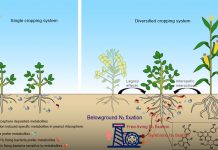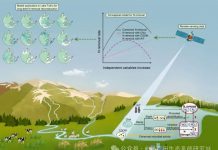Zhang XF Xin XL Zhu AN Zhang JB Yang WL. Effects of tillage and residue managements on organic C accumulation and soil aggregation in a sandy loam soil of the North China Plain. CATENA 2017 156: 176-183
Abstract
This paper was primarily devoted to reveal the stock of soil organic carbon (C) as well as its lability and to compare their differences existing among tillage and residue practices aiming to identify the effects on the accumulation process of organic C and its association with macroaggregation. Arable soils following 8-year contrasting managements were collected to determine aggregate size distribution organic C content and its lability. A wet-sieving method was used to fractionate aggregate fractions including > 2000 μm large macroaggregates 2000–250 μm small macroaggregates 250–53 μm microaggregates and < 53 μm silt + clay fractions. The C amount in physical subfractions was measured using aggregate fractionation techniques. It was found that reduced-no-tillage and straw returning significantly promoted soil macroaggregation and aggregate stability at the 0–10 cm depth. The organic C stock was 20.7% higher in 0–5 cm soil and 7.5% higher in 5–10 cm soil under reduced-no-tillage than continual tillage whereas straw returning significantly increased organic C stock by 28.8% 25.1% and 7.7% respectively at the 0–5 5–10 and 10–20 cm depths. Macroaggregates made a larger contribution to soil organic C accumulation than did other fractions. Both reduced-no-tillage and straw returning significantly increased the contribution of macroaggregates at the expense of microaggregates and silt + clay fractions at the 0–10 cm depth. When large and small macroaggregates were further separated into physical subfractions reduced-no-tillage coupling with straw returning averagely increased the C amount in the intra-particulate organic matter (iPOM) and mineral-associated C (mSOC) but decreased the oxidation stability coefficients (Kos) of organic C in aggregates. Significant and negative relationships were found between the mass proportion of macroaggregates as well as aggregate stability and the Kos values of organic C. The Kos values of macroaggregate-associated C were also significantly negatively correlated with the C amount in subfractions. Overall the accumulation of organic C in physical subfractions within macroaggregates might contribute to sequester relatively labile organic C in soil following reduced-no-tillage and straw returning which in turn promoted soil macroaggregation.







